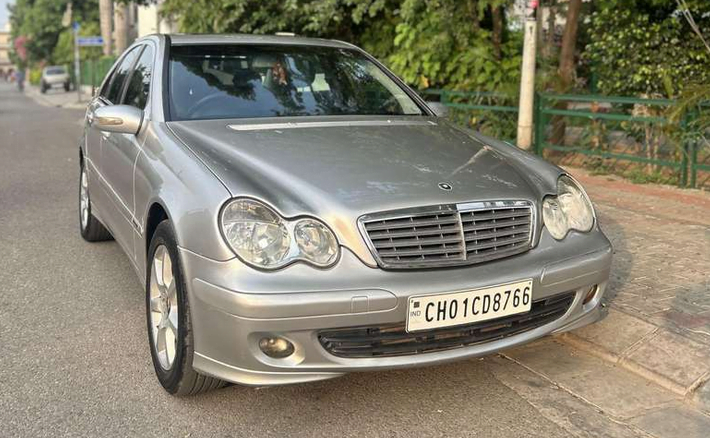Mercedes W203 C class won’t start – Here is what to check
So, just the day you turned the ignition key and the car just did not start. For different reasons, it may have had cracked but the engine did not turn over. Or while you turned the ignition, there was no sound at all.
I have been on various forums and found that all the Mercedes Benz cars experience this sort of problem. And since the car heavily depends on its electronics, it might not be easy to fix as a Toyota.
I have curated some helpful data from the internet and I wish this helps you repair your car and save money. I’ll start with the most obvious weak links.
Check the battery
Since the car has a bunch of loads of sensors, it needs its battery to be in top shape. If the voltage supply is inconsistent or low, the computer may get a false signal. This might prevent the car from starting. You might get the radio, interior lights and other accessories to work, but there will not be a running engine.
Take a multi-meter and set it to DC (not AC). Touch the positive to battery’s positive and negative to body ground or battery’s negative terminal. A healthy battery should show a reading of 12.2 to 12.8.
Now, have a friend watch over the multi-meter while you go and start the engine. If the voltage drops below 11V, you, my friend need a new battery. While you are there, unscrew the battery wires and clean them in and out with a wired brush. Rust and corrosion prevent a good connection. You can try to crank the engine again, but if it fails, then you are sure that you need a new battery.
Remember that Mercedes Benz uses some big juicy batteries. So, do buy the compatible one. The diesel models have a rating of 100 Ah. They cost a bit more but your car works fine with them.
If, even after replacing the battery, the problem persists, read on.
Check the battery current draw
If you have had a new battery installed and time and again it is drained and does not let the car start, then you might be looking at one big current parasite – the power seat modules.
On most cars, the electric seat adjustment can be used even when the car is turned off. This draws about 1.5 Amps for both the front seats. And since this is a common problem and well documented over forums, many people choose to bypass it. With that done, you will be able to adjust the front seats only when the car is turned ON and there will be almost no current draw that drains your battery.
Originally the fix is to replace the faulty power seat module, but it does not make sense to spend loads of money on an old Mercedes. So, bypassing is one good alternative and does not cost any money.
Under the seat, pull out the three-wire connector. The wiring code should be red-green (constant power), brown (brown) and pink-black (switched power). Here, you would want to roll up the insulation a bit so you have a decent wire length to work with. Now, use a crimp adapter to route the constant power wire into the switched power wire.
Check the fuses, relays for any loose connection
Next up, you need to check whether the car has blown fuse/s, relay and loose connections. The Mercedes W203 is an old car now and corroded terminals and frayed wiring can be expected.
Start with checking the following fuses in the front fuse box or SAM.
52 – Starter Motor – 15 Amps (replace it with a 20 Amps as Mercedes released a TSB about it)
53 – Starter Relay – 25 Amps for diesel engines and 15 Amps for gasoline engines
55 – Electronic selector level module unit – 7.5 Amps
57 – EIS – 5 Amps
Replace the one that is burned out with a new one of the same rating. And check it the car starts.
If it does not, then, with the battery disconnected, check its harness to the starter motor. It could have cracks in it. Or it might have some loose connection. Give it some jolt and see if the connection is strong and is tightened. Similarly check the other parts’ connections like the fuel pump, EIS, and CANBUS.
Now, is everything is in order? Does the car start? If, yes, then congratulations. If not, let’s check the next thing.
Starter motor
With the fuses and relays out of the way, next, you should check the starter motor itself. In other cars, you could trace the live wire from the battery to the starter motor. The same case is here, but the motor is in a very cramped position.
So, before crawling under the car and tapping the motor with a hammer you could try the other method.
Remove the fuse box cover (or SAM cover) in the engine compartment. You should be able to see a bunch of relays and fuses. Remove the relay (N10/1kS) that is the starter motor relay. With a jump wire connect terminals 80 and 37. Now the starter should operate and then you will hear the car cranking.
If this method does not work, then you are looking at a starter motor, its wiring or something else (read on).
Check for gear selector connection
One of the prerequisites for the car to start is to have a signal from the transmission control module that the transmission is in the P or N position.
Now, there can be three most common failures that happen and the TCM does not send the gear selection signal to the ECU. Brake switch, loose connection or gear selection module failure.
Always start with the cheapest repair. Check for any loose connection or corroded terminal. Then move to replace the brake light switch. And if all fails (do not replace the gear selector module just yet), try baking the gear selector module for 8 minutes straight in the oven. I have written this method in the W203 common problem article.
This should fix the problem of you being not able to shift the car from P to any other position. And hopefully, the ECU recognizes the signal and starts the car when the key is turned.
If it has not, jump on to the next step.
Starter Contact Switch
Not known to fail commonly, it does fail. And when that happens, it prevents the car from cranking. You will need a Torx head screwdriver and a bit of elbow grease.
Crawl under the car and remove the heat shield. You’ll now have access to the starter contact switch mounted on the transmission. Unplug it and crank the engine. If it starts then you have to replace the starter contact switch.
Check for jammed pulley
Not a common sight this is. Not on many occasions, the AC compressor gets jammed and may stop the engine or prevent it from starting, as it makes the crankshaft pulley not turn.
The AC compressor takes the most effort to turn and that’s why I had mentioned checking that.
You will have to loosen the tensioner pulley and crank the engine. If it does start, then your AC compressor may need replacement. While you are there, why not check other pulleys too?
Bad key or the EIS
Mercedes keys fob got bad and so do the electronic ignition system (EIS), but the latter fails seldom. There are two things that the key does. First, it disarms the security system (immobilizer) and second it verifies whether it is placed in the right make of the car.
If the car does not start, there are two possibilities – first is the drained battery. You can check the battery using the secret menu or with a multi-meter. The second is the EIS failure which is very expensive to fix.
Nine out of ten times it is the key that has malfunctioned. Try your second key and see if the car starts. If it does, then you know who is the culprit and if not, do not buy the EIS just yet.
Get it diagnosed with STAR
Before shelling out big money, it is always a good idea to take a second opinion from an expert. Many independent garages have STAR or any other good scanner. They can pinpoint exactly what problem the car is having. It could be a short or open circuit.
So, get your car scanned and the technician should be able to find the exact problem.

